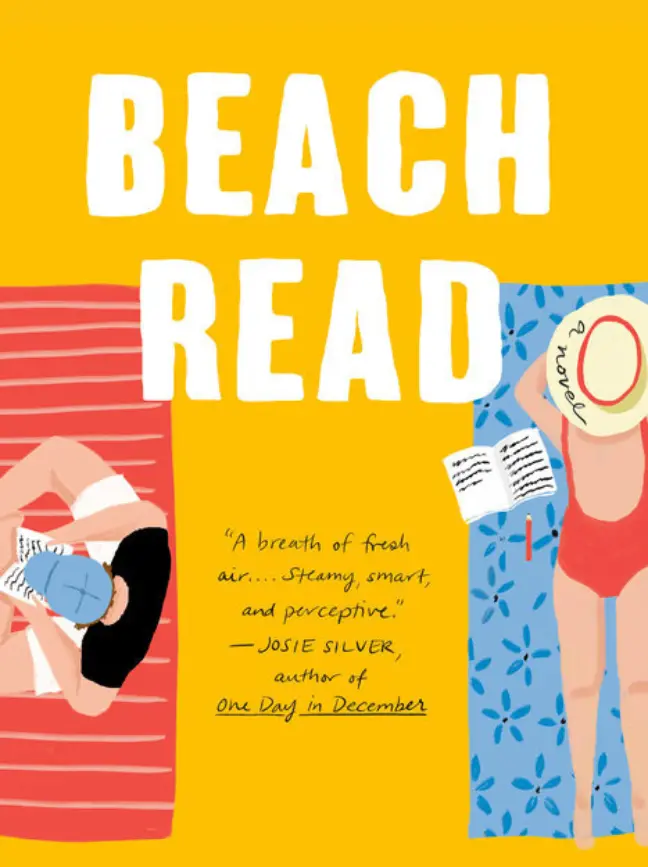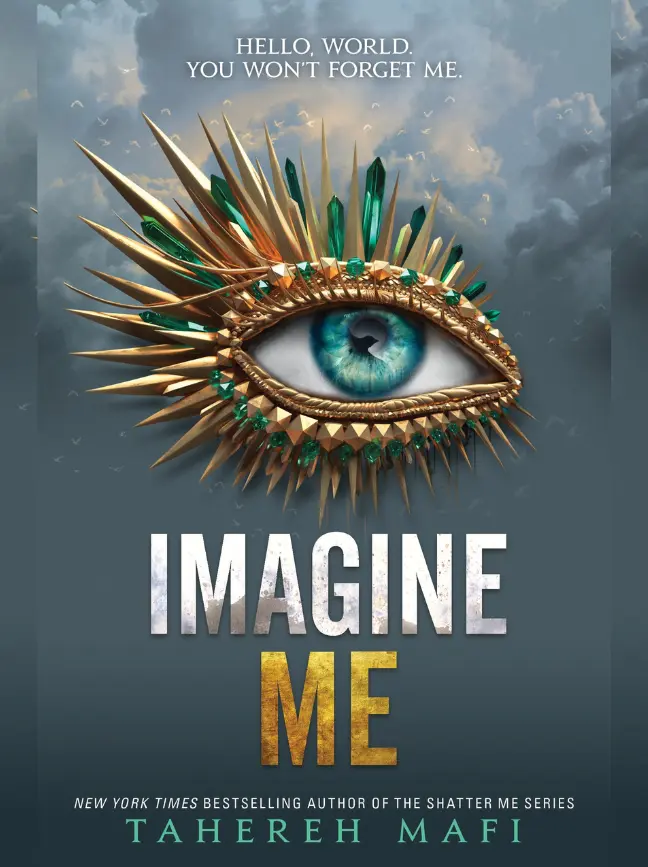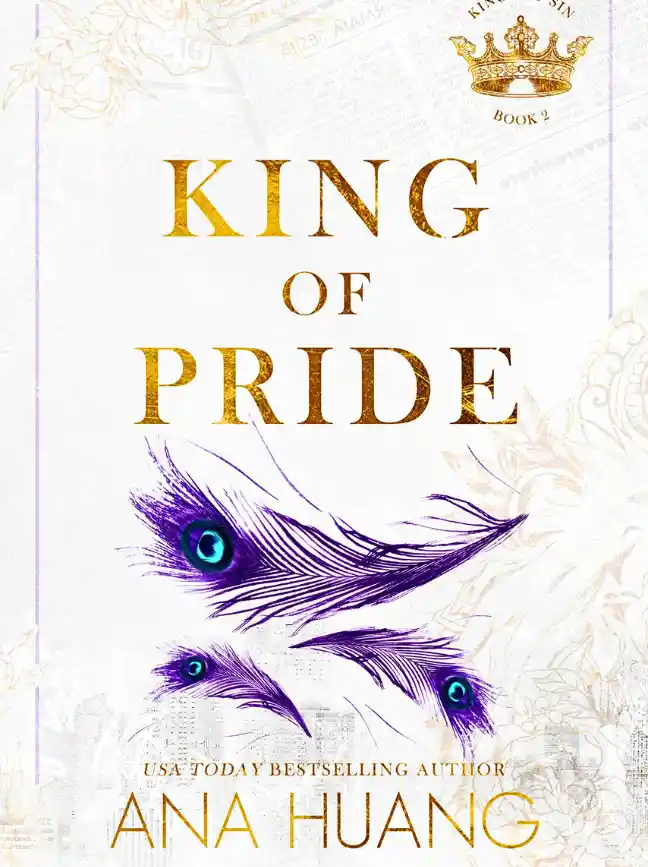My vision went black for a moment as the headset instructed my brain to place my body into a harmless sleeplike state, while my conscious mind remained active inside what was basically a computer controlled lucid dream. Then the OASIS slowly materialized into existence all around me, and I found myself standing back inside Anorak’s study, where I’d last logged out.
Everything looked the same as before, but it felt completely different. I was actually here, physically inside the OASIS. It no longer felt like I was using an avatar. Now I felt like I was my avatar. There was no visor on my face, none of the faint numbness and constriction you always felt wearing a haptic suit or gloves. I didn’t even feel the ONI headset my real body was actually wearing. When I reached up to scratch my head, the device wasn’t there.
A light breeze blew into the study through the open window, and I could feel it on my skin and my face and in my hair.
I could feel my feet resting on the stone floor, snug inside the boots that my avatar was wearing.
I realized I could smell my surroundings too. I breathed in the musty scent of the ancient spell books that lined the walls, mingled with the smoke of the burning candles.
I reached out to touch a nearby worktable. I could feel the grooves in the woodgrain as I ran my fingertips across it. Then I spotted a large bowl of fruit on the table—one that hadn’t been there before. I picked up an apple and felt the weight of it in my hand, and its hard smoothness against my
palm. I squeezed it with all five of my fingertips and felt them create tiny craters of pulp beneath the surface of the apple’s skin.
I was awestruck by the perfect replication of all that interlinked sensory input. These were subtle, nuanced sensations that could never be re-created or simulated by a pair of haptic gloves.
I raised the apple to my avatar’s lips, which now felt like my own lips, and bit into it with what felt like my own teeth. It tasted like a real apple. The most perfectly ripe and delicious apple I’d ever eaten.
An OASIS user had always been able to eat and drink things with their avatar. But eating a food power-up or drinking a healing potion had always been a senseless pantomime performed with your haptic gloves. You never felt anything pass through your lips, and you definitely never tasted anything on your tongue.
Now, thanks to the ONI, I could. And I did.
I began to sample the other fruits in the bowl. The orange, banana, grapes, and papaya tasted just as delicious, and as I took a bite out of each one, I felt the fruit travel down my esophagus to my stomach. I could even feel my stomach getting full.
“Oh my God!” I exclaimed to the empty room. “This is fucking incredible!” But my words were garbled, because I was talking with a mouth full of papaya. I could feel the juice running down my chin. I wiped it on my sleeve. Then I began to run around the room, bursting with excitement, touching different surfaces and objects to see how they felt. And how did they feel? They all felt real. That’s how they fucking felt. It all felt real.
Once my initial euphoria began to wear off, I found myself wondering if the ONI also simulated pain. Because if pain felt as real as the fruit tasted, it was going to hurt. A lot.
As an experiment, I bit down lightly on my tongue. I could feel the pressure of each tooth against its surface, and the grain of my taste buds as I raked them against my incisors. But I didn’t feel any pain whatsoever, no matter how hard I bit. As I suspected, Halliday had put some sort of pain-prevention safeguard in place.
I drew one of my blasters and shot myself in the right foot. I took several hit points of damage, and felt a mild jolt of pain, but it seemed more like a hard pinch than a gunshot.
A giddy laugh escaped me as I holstered my blaster. Then I took three running steps toward the window and dove out of it, taking flight like Superman. As I rocketed up into the clouds, my robes fluttered in the wind like a cape. I felt like I was really flying.
I also suddenly felt like anything was possible. Because now it clearly was.
This was it—the final, inevitable step in the evolution of videogames and virtual reality. The simulation had now become indistinguishable from real life.
I knew Samantha wasn’t going to approve. But I was too exhilarated to let myself think about that. I wanted more. And the ONI had more in store for me. Much more.
I flew back to Anorak’s study and continued to experiment with the ONI’s abilities. That was when I discovered a new drop-down menu on my avatar’s heads-up display labeled ONI. When I selected it, I saw a list of a dozen large files that had already been downloaded to my account. They all had an .oni extension, and provocatively simple filenames like RACING, SURFING, SKYDIVING, and KUNG-FU FIGHTING.
I selected SURFING and suddenly found myself standing on a surfboard, expertly riding the curved wall of a giant wave off the coast of some tropical island. But when I reflexively tried to move to keep my balance, I realized that I wasn’t in control. This was a passive experience. I was just along for the ride. And somehow, it also felt different from what I’d experienced in Anorak’s study—where that had been eerily smooth and precise, this was somehow more intense but also jarring and dislocating.
Looking down at my body, I realized that I was no longer Parzival—I was someone else. Someone smaller and thinner, with darker skin, and strands of long black hair hanging in front of their eyes. Someone wearing a bikini. Someone with breasts. I was a woman! And an expert surfer. Not an avatar. A real person had recorded this experience. I was experiencing a piece of someone else’s life.
I had no control over my movements, but I could see, hear, smell, and feel everything—every sensation experienced by the woman who had made this recording. I could even feel the ONI headset on my—her—head, and I could also see the portable data drive it was connected to housed inside a waterproof casing that was strapped to her right arm.
That explained the difference in sensations too. I was no longer experiencing simulated input, created for me by the OASIS servers—I was actually feeling the world through this surfer’s body, moment by moment, delivered by her synapses. Raw neural input, from a brain that was not my own.
When the wave crashed over me a few seconds later, the experience clip ended and I found myself back inside my own avatar’s skin, standing back inside Anorak’s study.
I pulled up the next clip, and then the next. I drove a racecar, did some skydiving, kung-fu fighting, deep-sea diving, and horseback riding—all within the same half hour.
I played every .oni file on the list, one after the other, leaping from place to place, from body to body, and from one experience to another.
I stopped when I reached a series of files with names like SEX-M-F.oni, SEX-F-F.oni, and SEX-Nonbinary.oni. I wasn’t ready for any of that. I was still truly, madly, deeply in love with Samantha. And I was still reeling from losing my virginity to her just a few days earlier. I didn’t want to be unfaithful to her. I figured that cheating was cheating, whether it was live or it was Memorex.
I logged out of the OASIS and took control of my own body once again. The process took a few minutes. Then I removed the ONI headset and opened my eyes. I looked around my office. I checked the time. Over an hour had passed, which seemed about right.
I gripped the arms of my chair. I reached up to touch my face. Reality didn’t feel any more real than the OASIS had just felt to me. My senses couldn’t discern between the two.
Halliday was right. The ONI was going to change the world.
How in the hell had Halliday done this? How had he managed to invent such a complex device in secret? Hardware hadn’t even been his specialty.
The documentation he’d sent me held the answer. When I read through the rest of it, I learned that Halliday had been working on this for over twenty-five years, with an entire research lab full of neuroscientists—hiding his secret in plain sight.
A few months after GSS launched the OASIS, Halliday set up an R&D division at the company called the Accessibility Research Lab. Ostensibly, its mission had been to create a line of neuroprosthetic hardware that would allow people with severe physical disabilities to use the OASIS more easily. Halliday hired the best and brightest minds in the field of neuroscience to staff the ARL, then he gave them all the funding they would ever need to conduct their research.
The ARL’s work over the next few decades was certainly no secret. To the contrary, their breakthroughs had created a new line of medical implants that became widely used. I’d read about several of them in my high school textbooks. First, they developed a new type of cochlear implant that—for those who chose to use it—allowed the hearing impaired to perceive sound with perfect clarity, both in the real world and inside the OASIS. A few years later, they unveiled a new retinal implant that allowed any blind people who wished to be sighted to “see” perfectly inside the OASIS. And by linking two head-mounted mini cameras to the same implant, their real-world sight could be restored as well.
The ARL’s next invention was a brain implant that allowed paraplegics to control the movements of their OASIS avatar simply by thinking about it. It worked in conjunction with a separate implant that allowed them to feel simulated sensory input. And the very same implants gave these individuals the ability to regain control of their lower extremities, while restoring their sense of touch. They also allowed amputees to control robotic replacement limbs, and to receive sensory input through them as well.
To accomplish this, the researchers devised a method of “recording” the sensory information transmitted to the human brain by the nervous system
in reaction to all manner of external stimuli, then compiled these assets into a massive digital library of sensations that could be “played back” inside the OASIS to perfectly simulate anything a person could experience through their senses of touch, taste, sight, smell, balance, temperature, vibration—you name it.
GSS patented each of the Accessibility Research Lab’s inventions, but Halliday never made any effort to profit from them. Instead, he set up a program to give these neuroprosthetic implants away, to any OASIS users who could benefit from them. GSS even subsidized the cost of their implant surgery. This program made powerful new tools available to any physically disabled individuals who chose to use them, but it also provided the ARL with a nearly unlimited supply of willing human guinea pigs on whom to conduct their ongoing experiments.
I’d grown up seeing headlines about the ARL’s breakthroughs with brain implants on the newsfeeds, but like most people I’d never really paid much attention to them, because the technology was only available to people who were severely physically disabled and willing to undergo invasive (and possibly fatal) brain surgery.
But while they were making all of these astounding breakthroughs, the Accessibility Research Lab also spent those decades developing another, secret piece of technology, one that would ultimately stand as the ARL’s greatest achievement—a computer-brain interface that could accomplish everything their implants could, but without the need for surgery. Using the wealth of data they’d amassed on the inner workings of the human mind and an elaborate combination of EEG, fMRI, and SQUID technologies, the lab had developed a way to read brain waves and transmit them solely via dermal contact. Halliday compartmentalized each facet of the project, so that each team of scientists or engineers worked in isolation from the others, and he alone knew how it was all going to fit together.
It took billions of dollars and decades of work before they finally succeeded in creating a fully functional prototype of the OASIS Neural Interface headset. But as soon as they completed the final round of safety testing, Halliday shut the ONI project down and proclaimed it a failure. A few weeks later he shuttered the Accessibility Research Lab and fired its entire staff. They were all given severance packages that ensured they’d
never need to work again—contingent upon their strict adherence to the nondisclosure agreements they’d signed when they were first hired.
This was how Halliday had created the world’s first noninvasive brain-computer interface without the world knowing it.
And now my friends and I had inherited this invention. It was ours—to bury or to reveal.
We didn’t make our decision lightly. We weighed all of the pros and cons. Then, after a heated debate, the four of us held a vote. The ayes had it. And just like that, we changed the course of human history forever.
After another series of safety trials, GSS patented the OASIS Neural Interface technology and began to mass-produce the headsets. We put them on sale at the lowest possible price, to make sure as many people as possible could experience the OASIS Neural Interface for themselves.
We sold a million units that first day. And the moment our headsets hit the store shelves, IOI’s entire line of VR goggles and haptic gear were instantly rendered obsolete. For the first time in history, GSS became the world’s leading manufacturer of OASIS hardware. And as word of the ONI’s abilities began to spread, sales continued to increase exponentially.
And then, just a few days later, it happened—the event that set this whole tale in motion.
A few seconds after the OASIS servers reached 7,777,777 simultaneous ONI users, a message appeared on Halliday’s long-dormant website, where the Scoreboard for his contest had once resided:
Seek the Seven Shards of the Siren’s Soul
On the seven worlds where the Siren once played a role For each fragment my heir must pay a toll
To once again make the Siren whole
It came to be known as the Shard Riddle, and the first thing old-school gunters noticed was that its rhyme scheme and syllable count were identical to the “Three Hidden Keys Open Three Secret Gates” rap that Halliday had used to announce his famous Easter-egg hunt.
People assumed the Shard Riddle was just an elaborate publicity stunt, concocted by GSS’s new owners to help promote the roll-out of our ONI headsets. And we never did anything to deny or discourage these rumors, because they helped foster the perception that the OASIS was now under our complete control. But the four of us knew the unsettling truth. We had no idea what the hell was going on.
The Shard Riddle appeared to announce the existence of a second Easter egg—another object hidden somewhere inside the OASIS by its eccentric creator sometime prior to his death. And the timing of the riddle’s appearance couldn’t be a coincidence. It had clearly been triggered by our decision to release the OASIS Neural Interface to the public.
So what exactly was Halliday trying to tell us?
The “Siren” seemed to be a reference to Kira Morrow, Og’s deceased wife and Halliday’s unrequited love. Back when they were all in high school together in Ohio, Kira had named her Dungeons & Dragons character Leucosia, after one of the Sirens of Greek myth. Many years later Kira had given her OASIS avatar that same name. After her death, Halliday had used the name Leucosia as a computer password, which I’d had to guess to win the final challenge of his contest.
It wasn’t clear what would happen if someone managed to collect the Seven Shards and “once again make the Siren whole.” But I started searching for them anyway. Halliday had thrown down a gauntlet once again, and I couldn’t resist picking it up.
And I wasn’t alone. The riddle’s appearance spawned a whole new generation of gunters, and they all began to scour the OASIS for the Seven Shards. But unlike Halliday’s egg, no reward for finding the Siren’s Soul had ever been announced, so no one knew exactly what they were searching for, or why.
In what seemed like the blink of an eye, an entire year passed.
We hit three billion units sold. Then four.
It quickly became evident that our patented, proprietary brain-computer-interface headsets had an endless array of non-OASIS-related applications in the fields of science, medicine, aviation, manufacturing, and warfare.
Innovative Online Industries’ stock continued to plummet. When it fell low enough, we orchestrated a hostile takeover of the company. GSS absorbed IOI and all of its assets, transforming us into an unstoppable megacorporation with a global monopoly on the world’s most popular entertainment, education, and communications platform. To celebrate, we released all of IOI’s indentured servants and forgave their outstanding debts.
Another year passed. The OASIS reached a new benchmark—five billion individual users logged in each day. Then six. Two-thirds of the people on our overcrowded, rapidly warming little planet. And over 99 percent of the people who accessed the OASIS now did so using one of our neural interface headsets.
Just as Halliday predicted, this new technology began to have a profound impact on people’s day-to-day lives, and on human civilization at large. There were new experiences to download every day. Anything and everything you could imagine. You could go anywhere, do anything, and be anyone. It was the most addictive pastime imaginable—far more addictive than the OASIS had ever been, and that was saying something.
Other companies made attempts to reverse-engineer the ONI headset and steal our neural-interface technology—but the software and processing power required to make the ONI technology function was all part of the OASIS. Experiences could be recorded offline as an .oni file, even a
bootleg one, but the file could only be played back by being uploaded to the OASIS. This allowed us to weed out unsavory or illegal recordings before they could be shared with other users. It also let us maintain our monopoly on what was rapidly becoming the most popular form of entertainment in the history of the world.
GSS rolled out the ONI-net, a social-media platform built around .oni file-sharing. It allowed users to browse, purchase, download, rate, and review ONI experiences recorded by billions of other people around the world. It also allowed you to upload your own experiences and sell them to the rest of the OASIS.
“Sims” were recordings made inside the OASIS, and “Recs” were ONI recordings made in reality. Except that most kids no longer referred to it as “reality.” They called it “the Earl.” (A term derived from the initialism IRL.) And “Ito” was slang for “in the OASIS.” So Recs were recorded in the Earl, and Sims were created Ito.
Now instead of following their favorite celebrity on social media, ONI users could become their favorite celebrity for a few minutes each day. Exist inside their skin. Live short, heavily curated fragments of far more glamorous lives.
Now people no longer watched movies or television shows—they lived them. The viewer was no longer in the audience. Now they were one of the stars. Instead of just being in the audience at a rock concert, now you could experience the concert as each member of your favorite band, and be each one of them as they/you performed your favorite song.
Anyone with an ONI headset and an empty data drive could record a real-life experience, upload it to the OASIS, and sell it to billions of other people all around the world. You earned coin for every download, and GSS only took 20 percent off the top for making it all possible. If one of your clips went viral, the profits could make you rich overnight. Movie, rock, porn, and streaming stars were all scrambling to exploit this brand-new revenue stream.
For less than the cost of an iced latte, you could now safely experience just about anything that human beings could experience. You could take any drug, eat any kind of food, and have any kind of sex, without worrying about addiction, calories, or consequences. You could relive uncut real-life
experiences, or play your way through scripted interactive adventures inside the OASIS. Thanks to the ONI, it all felt completely real.
The ONI made the lives of impoverished people all around the world a lot more bearable—and enjoyable. People didn’t mind subsisting on dried seaweed and soy protein when they could log on to the ONI-net and download a delicious five-course meal anytime they pleased. People could sample any cuisine from any part of the globe, prepared by any of the world’s finest chefs, and have it served to them in a mansion, or on a mountaintop, or in a scenic restaurant, or on an autojet headed to Paris. And as a bonus, you could experience any of these meals as a diner with unusually sensitive taste buds. Or as a celebrity, dining with other celebrities, who were all being waited on by a bunch of ex-celebrities. Name your poison.
Moderating all of this user-generated content was a challenge—and a huge responsibility. GSS implemented CenSoft, our custom strong-AI censor software, which scanned every .oni recording before it was released and flagged suspicious content for human review. Questionable material was reviewed by GSS employees, who then decided whether the clip was safe to release—and, if any criminal behavior was captured, they forwarded it on to law enforcement officials in the uploader’s country or region.
New applications of ONI technology continued to reveal themselves. For example, it became fashionable for young mothers to make an ONI recording while they gave birth to their child, so that in a few decades, that child would be able to play back that recording and experience what it feels like to give birth to themselves.
And me?
All my dreams had come true. I’d gotten stupidly rich and absurdly famous. I’d fallen in love with my dream girl and she had fallen in love with me. Surely I was happy, right?
Not so much, as this account will show. I was suddenly way out of my depth, both personally and professionally, so it didn’t take very long for me to completely screw up my life once again. And when I did, I returned to seek solace from my oldest friend, the OASIS.
I’d struggled with OASIS addiction before the ONI was released. Now logging on to the simulation was like mainlining some sort of chemically engineered superheroin. It didn’t take long for me to become an addict. When I wasn’t playing back ONI recordings, I was browsing the ONI-net and adding new recordings to my playback queue.
Meanwhile, I continued to search for the Seven Shards of the Siren’s Soul. I could teleport anywhere in the OASIS, buy anything I wanted, and kill anyone who got in my way. But I still wasn’t making any progress. And I couldn’t understand why.
Finally, out of a mixture of disgust and desperation, I offered a billion dollars to anyone who could provide me with information on how to locate just one of the Seven Shards. I announced this reward with a stylized short film that I modeled after Anorak’s Invitation. I hoped it would seem like a lighthearted play on Halliday’s contest instead of a desperate cry for help. It seemed to work.
My billion-dollar shard bounty caused quite a stir inside the OASIS. The number of gunters searching for the shards quadrupled overnight. But none of them managed to claim my reward. (For a brief time, some of the younger, more idealistic shard hunters referred to themselves as “shunters” to differentiate themselves from their elder counterparts. But when everyone began to call them “sharters” instead, they changed their minds and started to call themselves gunters too. The moniker still fit. The Seven Shards were Easter eggs hidden by Halliday, and we were all hunting for them.)
Another year passed.
Then, just a few weeks after the third anniversary of the ONI’s launch, it finally happened. An enterprising young gunter led me to the First Shard. And when I picked it up, I set in motion a series of events that would drastically alter the fate of the human race.
As one of the only eyewitnesses to these historic events, I feel obligated to give my own written account of what occurred. So that future generations
—if there are any—will have all the facts at their disposal when they decide how to judge my actions.
Level Four
My friend Kira always said that life is like an extremely difficult, horribly unbalanced videogame. When you’re born, you’re given a randomly generated character, with a randomly determined name, race, face, and social class. Your body is your avatar, and you spawn in a random geographic location, at a random moment in human history, surrounded by a random group of people, and then you have to try to survive for as long as you can.
Sometimes the game might seem easy. Even fun. Other times it might be so difficult you want to give up and
quit.
But unfortunately, in this game you only get one life. When your body grows too hungry or thirsty or ill or injured or old, your health meter runs out and then it’s Game Over.
Some people play the game for a hundred years without ever figuring out that it’s a game, or that there is a way to
win it. To win the videogame of life you just have to try to make the experience of being forced to play it as pleasant as
possible, for yourself, and for all of the other players you
encounter in your travels. Kira says that if everyone played the game to win, it’d be a
lot more fun for everyone.
—Anorak’s Almanac, chapter 77, verses 11–20








